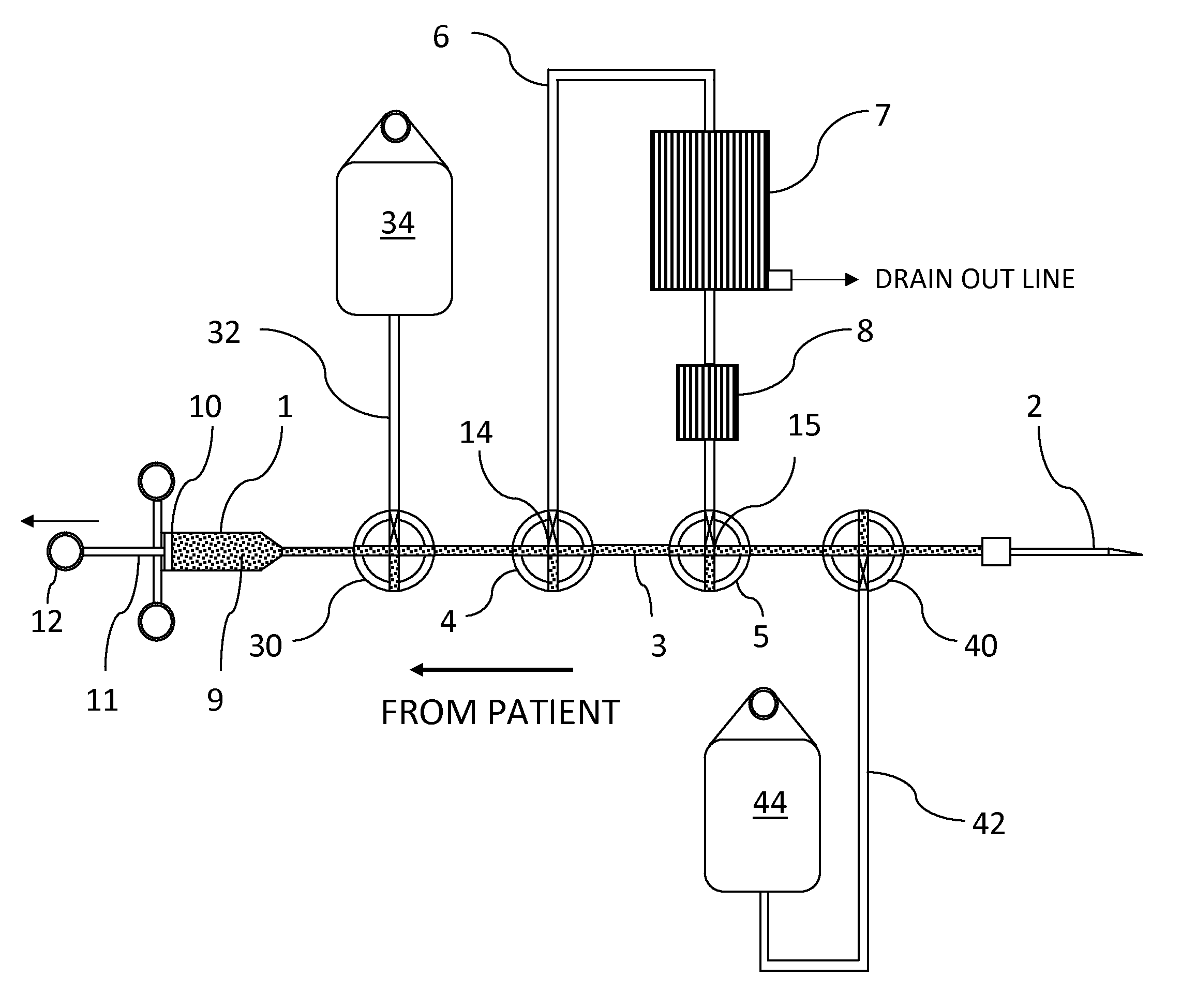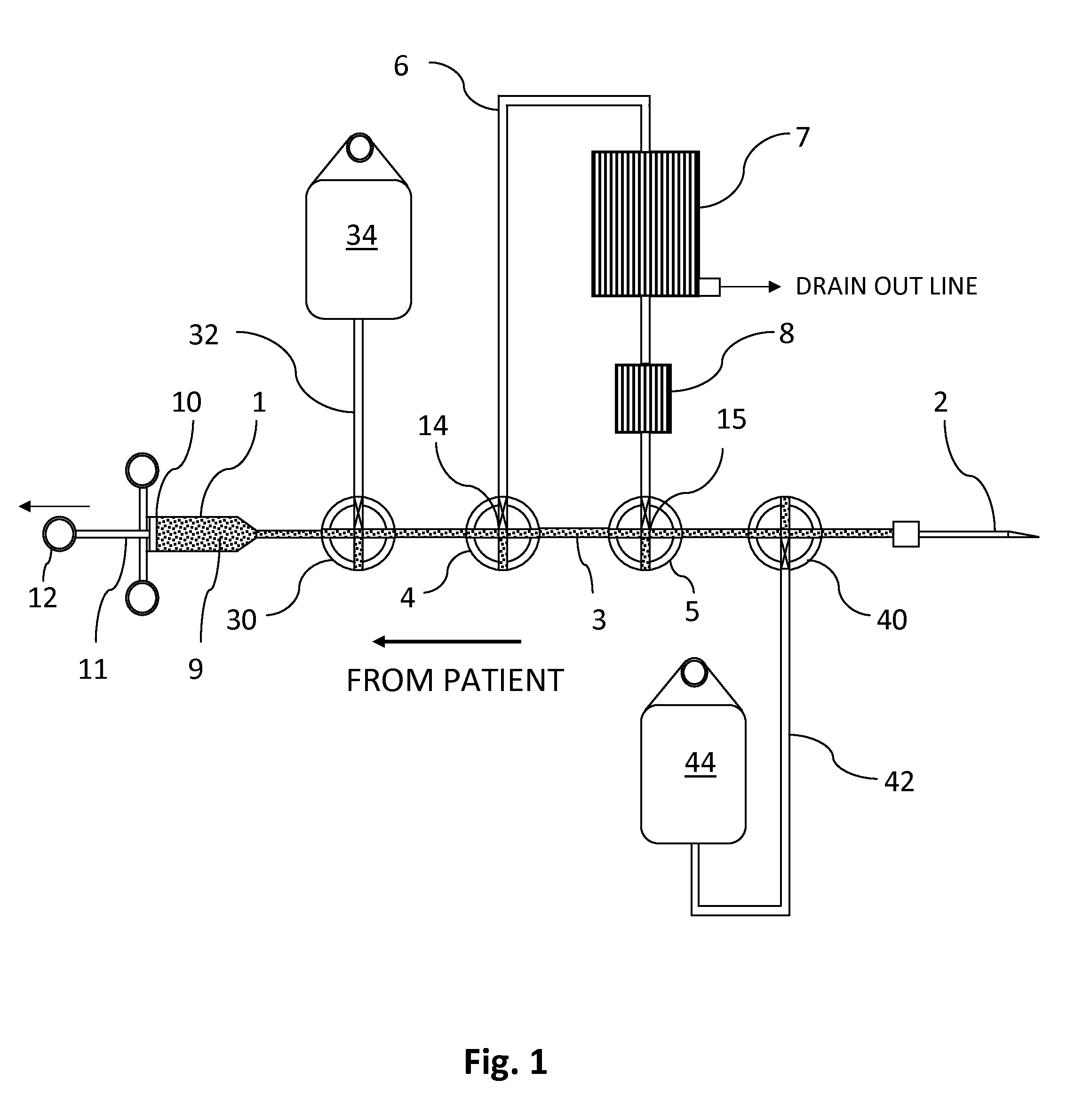Manually operated disposable single-needle circuit for extracorporeal treatment of blood
a single-needle, intra-corporeal technology, applied in the direction of suction devices, other medical devices, surgical systems, etc., can solve the problems of affecting the patient's life, the procedure has been found to have serious disadvantages both for the patient and the attending physician and technicians, and achieves the effect of reducing patient trauma and tissue damag
- Summary
- Abstract
- Description
- Claims
- Application Information
AI Technical Summary
Benefits of technology
Problems solved by technology
Method used
Image
Examples
first embodiment
[0038]In a useful variation of the circuit according to the invention, only one three-way valve 4 at the proximal bifurcation 14 can be used and the other bifurcation may contain all three lines connected together. This configuration is not shown on the drawings but would be readily understood by those skilled in the art. All that is needed for a successful operation of the circuit in that case is the blood treating unit 7 and the air removal element 8 to have hard-shell housings to prevent their collapse during blood withdrawal stage of the procedure. The advantage of this configuration is the ease of use of the circuit since only one valve has to be operated by the user.
DETAILED DESCRIPTION OF THE SECOND PREFERRED EMBODIMENT OF THE INVENTION
[0039]A detailed description of the second preferred embodiment of the present invention follows with reference to accompanying drawings in FIGS. 3 and 4. The circuit includes all the same main elements as in the first embodiment of the inventi...
second embodiment
[0042]The advantage of the circuit of the second embodiment is the automatic function of the device during both the withdrawal and return stages of the treatment without the need to manually operate the valves. As the user pulls on the manual pump 1, blood is drawn from the patient into the circuit and along line 3 while loop 6 remains closed. Upon reversal of the pump operation, when pressure is developed inside the pump, blood is forced through the loop 6 to be treated and returned back to the patient.
[0043]The present invention has several particular advantages as outlined above in detail and therefore can be advantageously used in the following blood treatment circumstances:[0044]as a plasma filtration unit for acute crash syndrome;[0045]for urgent extracorporeal hemofiltration in cases of diuretic-resistant acute lung edema;[0046]for extracorporeal detoxification of neonates and newborn babies;[0047]for extracorporeal detoxification and / or plasma filtration in the field, in sit...
PUM
 Login to View More
Login to View More Abstract
Description
Claims
Application Information
 Login to View More
Login to View More - R&D
- Intellectual Property
- Life Sciences
- Materials
- Tech Scout
- Unparalleled Data Quality
- Higher Quality Content
- 60% Fewer Hallucinations
Browse by: Latest US Patents, China's latest patents, Technical Efficacy Thesaurus, Application Domain, Technology Topic, Popular Technical Reports.
© 2025 PatSnap. All rights reserved.Legal|Privacy policy|Modern Slavery Act Transparency Statement|Sitemap|About US| Contact US: help@patsnap.com



